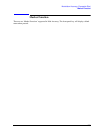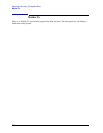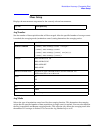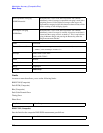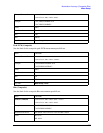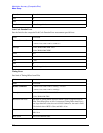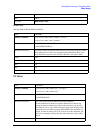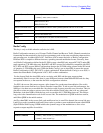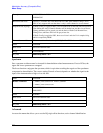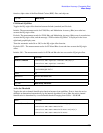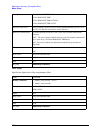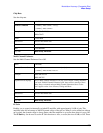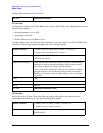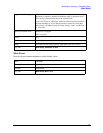
751
Modulation Accuracy (Composite Rho)
Meas Setup
Radio Config
This key is only available when the radio device is MS.
Radio Configuration means a set of Forward Traffic Channel and Reverse Traffic Channel transmission
formats that are characterized by physical layer parameters such as data rates, modulation characteristics,
and spreading rate, its abbreviation is RC. And the n of RCn means the index of Radio Configuration.
Different RCn is coupled to different data rate, spreading rate and modulation format. Currently, there
are 9 Radio Configurations defined in the IS–2000 system. cdma2000 only support RC1-RC5 under SR1
mode operation (1.28 MHz chip rate). Both RC1 and RC2 are used for backwards compatible with IS95.
RC3, RC4 and RC5 are new Radio Configurations that use the IS–2000 coding scheme in the SR1 mode
of operation (1.2288 MHz chip rate). When the Radio Config is set as cdma2000, it means the current
Radio Configuration is RC3, RC4, RC5, or their combination. When the Radio Config is set as IS95, it
means the current Radio Configuration is RC1, RC2 or their combination.
For the forward link, the cdma2000 can be coexisting with IS95 and the tester supports them
automatically. But for reverse link, there is great difference between cdma2000 and IS95 and also they
are separate in the test, so the tester has the radio configuration selection.
For IS95, the reverse link cannot support a pilot channel for synchronous demodulation. Due to this
limitation, the reverse link has less capacity than the forward link. To aid reverse link performance, the
9600 bps voice data uses a one-third rate convolution coded for more powerful error correction. Then six
data bits at a time are taken to point at one of the 64 available Walsh codes, that is 64-ary orthogonal
Modulator. And then XOR'ed with the long code to reach the full 1.2288 Mbps data rate. This unique
long code is the channelization code for the reverse link. The modulation is QPSK in the base station,
and Offset QPSK in the mobile station.
And For cdma2000, in the reverse link, each mobile now has its own Pilot channel, the reverse link uses
I and Q long codes scrambled with I and Q short codes to produce a new modulation format called HPSK
(Hybrid Phase Shift Keying). HPSK reduces the dynamic range of the modulation to allow a less
expensive output amplifier for mobiles.
Remote Command [:SENSe]:RHO:SYNC:LCMask <integer>
[:SENSe]:RHO:SYNC:LCMask?
Example RHO:SYNC:LCM 0
RHO:SYNC:LCM?
Remote Command Notes This command is effective when [:SENSe]:RADio:DEVice is set to MS.
Preset 0
State Saved Saved in instrument state.
Range 0 to 4,398,046,511,103 (0h to 3F,FFF,FFF,FFFh)
Key Path
Meas Setup, More 1 of 2
Mode cdma2000
Remote Command [:SENSe]:RHO:RCONfig cdma2000|IS95
[:SENSe]:RHO:RCONfig?



